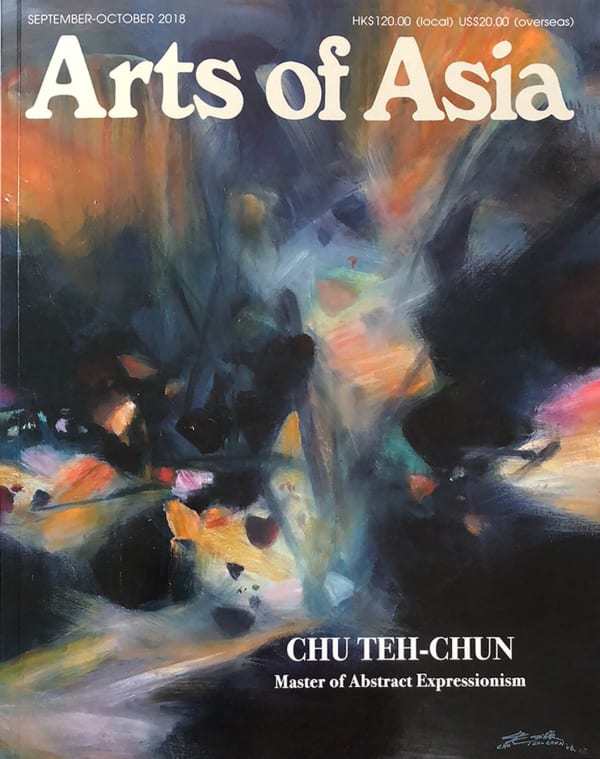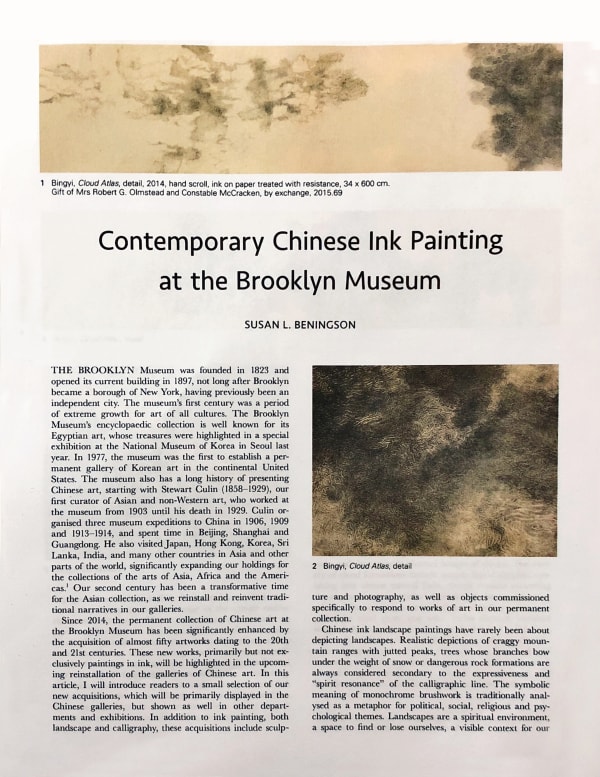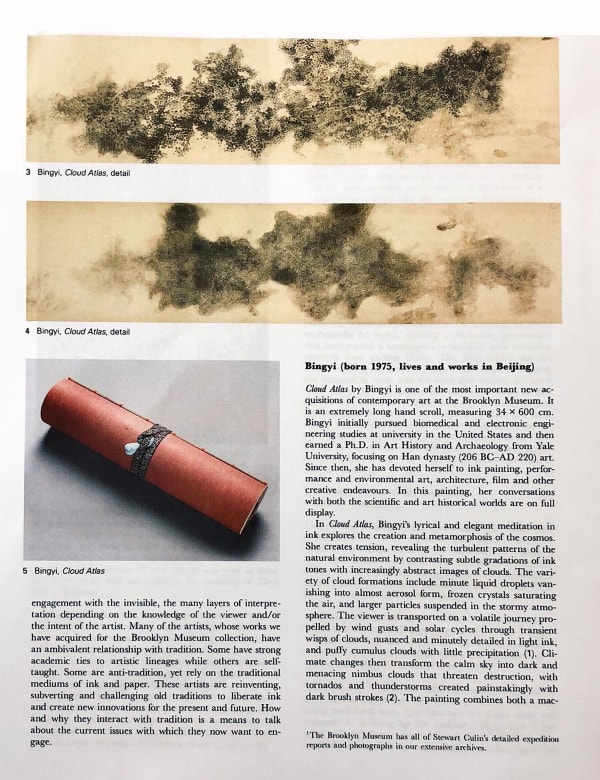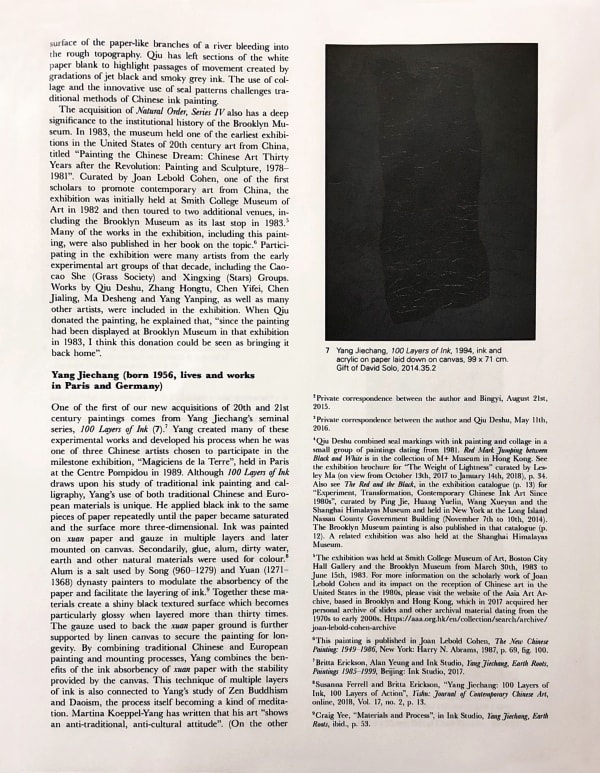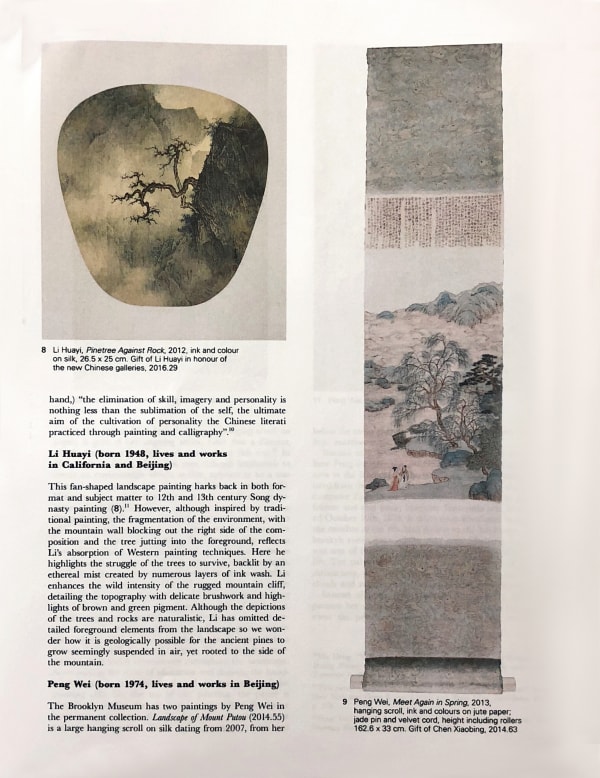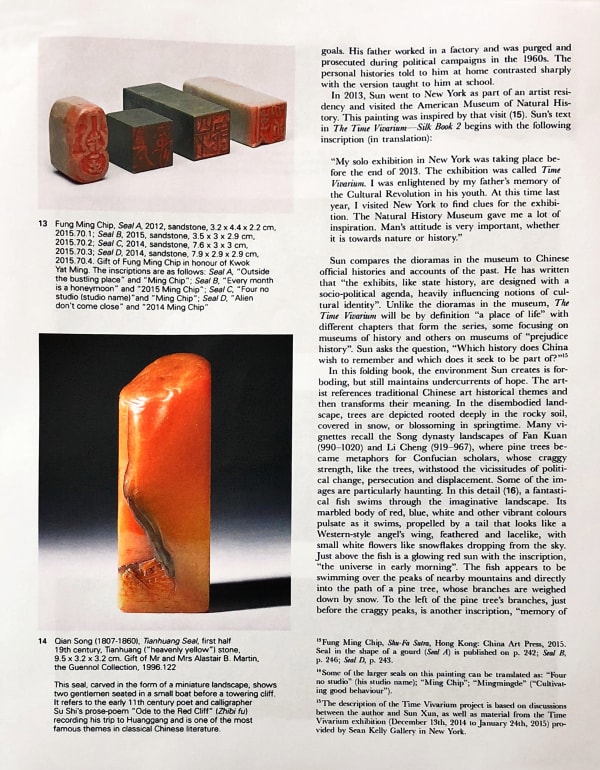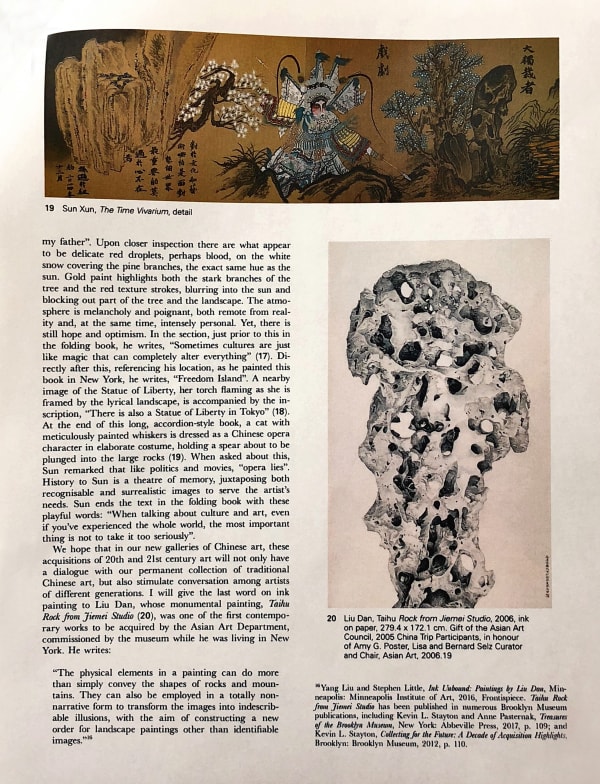Arts of Asia explored the collection of contemporary Chinese ink painting in the Brooklyn Museum collection in their September-October 2018 issue. Fung Ming Chip's ink painting and seals are featured, please see below for the full excerpt on Fung.
Contemporary Chinese Ink Painting at the Brooklyn Museum
By Susan L. Beningson
"The Brooklyn Museum permanent collection contains three handing scrolls by Fung Ming Chip, including Post-Marijuana, Sand Script, Struck by Lightning, Rubbing Script, 2012 (2014. 57.1), and Song of the Nightwalker, Time Script, 2012 (2014.57.3), as well as four seals carved by the artist (2015.70.1-.4). Through his radical deconstructs and Fung has created more than 100 of his own unique script styles. The Brooklyn Museum collection highlights the artist’s diversity and creative process by including three variations of his calligraphy: sand script, rubbing script and time script. He first writes with water on a blank sheet of Xuan paper. The characters become visible only after he applies a layer of dark ink over it. Where the water has already saturated the paper, the ink is only partially absorbed, leaving enigmatic traces of characters which float on the surface of the composition. In Post-Marijuana, Sand Script, Fung’s dark calligraphic swirls create rapidly rotating columns that churn the air with tornado- like intensity. The artist uses the technique of “flying white” where the traces of the individual hairs of the brush can be seen as ink starts to dry, to augment the dramatic curve of the painting. Raking beams of light using paler ink radiate at steep angles above and below this centre band and through the other swirls, creating a dynamic and three-dimensional composition. The streaming light and dark ink are layered over more traditionally written characters that are revealed in fragmented pieces, that are vaguely legible throughout the composition. These shadow- like characters are reminiscent of the interaction of the positive and negative space on the seals carving has played in his calligraphic practice. In Post-Marijuana, Sand Script, the play of light focuses the viewer’s attention on the images as they ebb and flow in rhythmic pulsating layers of ink, focusing on the visual experience rather than the meaning of the text.
Fung Ming Chip is the rare artist who carves his own seals and then uses them in unconventional ways to frame the abstracted calligraphic forms in his paintings. The seals are sometimes impressed in places that make them the focal point of the painting, rather than the calligraphy itself. He carves his seals in unusual forms, like the Seal in Shape of a Gourd (Seal A) or Seal D (2015.70.4), where the edges both extend past and are carved into the usual square boundaries. Their playful shapes and meaning do not conform to traditional norms, as seen in the Tianhuang Seal in the Brooklyn Museum collection."
Learn more --
https://www.brooklynmuseum.org/opencollection/objects/214202
https://www.brooklynmuseum.org/opencollection/objects/220362
https://www.brooklynmuseum.org/opencollection/objects/220365






